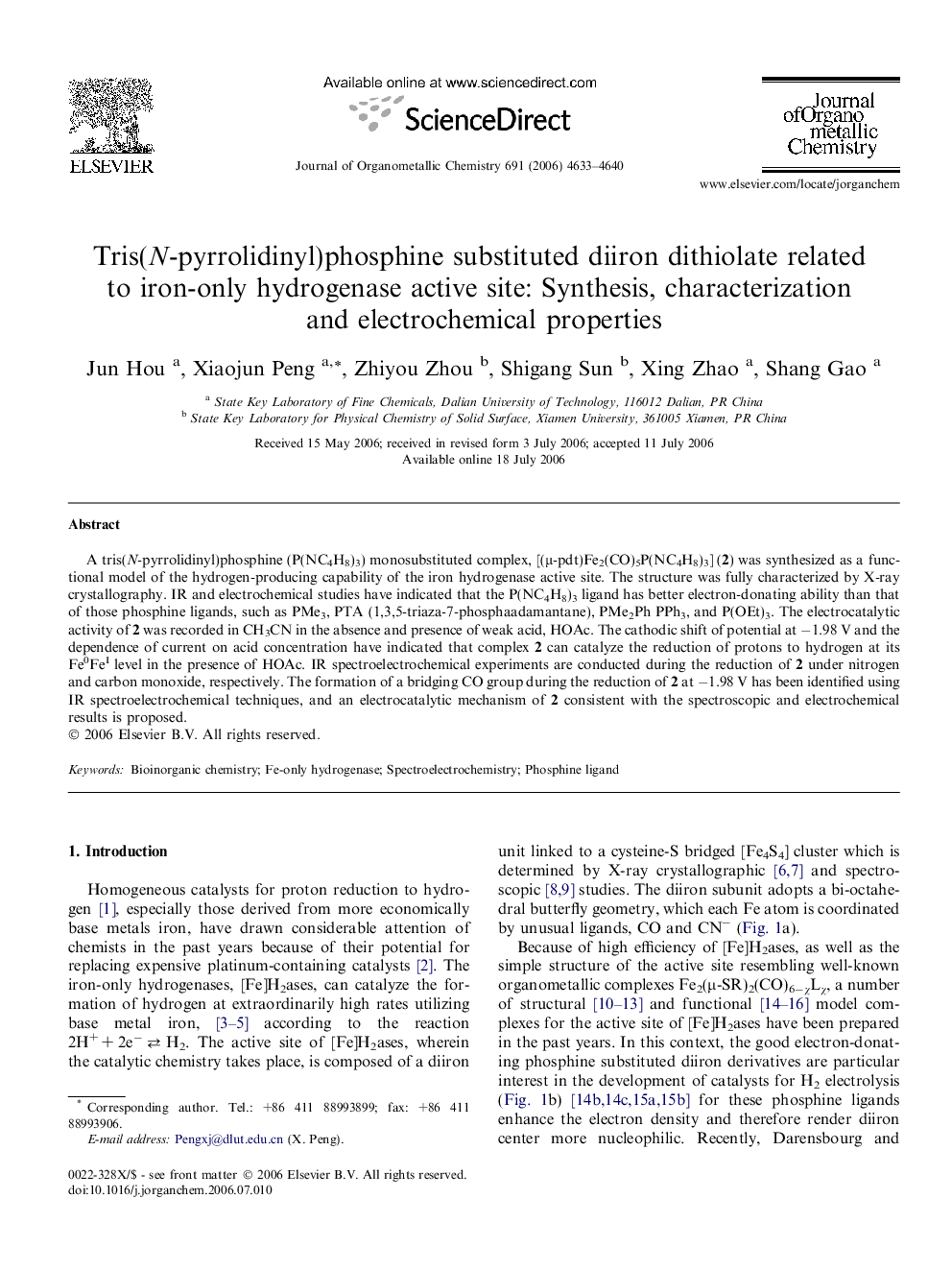| Article ID | Journal | Published Year | Pages | File Type |
|---|---|---|---|---|
| 1327423 | Journal of Organometallic Chemistry | 2006 | 8 Pages |
A tris(N-pyrrolidinyl)phosphine (P(NC4H8)3) monosubstituted complex, [(μ-pdt)Fe2(CO)5P(NC4H8)3] (2) was synthesized as a functional model of the hydrogen-producing capability of the iron hydrogenase active site. The structure was fully characterized by X-ray crystallography. IR and electrochemical studies have indicated that the P(NC4H8)3 ligand has better electron-donating ability than that of those phosphine ligands, such as PMe3, PTA (1,3,5-triaza-7-phosphaadamantane), PMe2Ph PPh3, and P(OEt)3. The electrocatalytic activity of 2 was recorded in CH3CN in the absence and presence of weak acid, HOAc. The cathodic shift of potential at −1.98 V and the dependence of current on acid concentration have indicated that complex 2 can catalyze the reduction of protons to hydrogen at its Fe0FeI level in the presence of HOAc. IR spectroelectrochemical experiments are conducted during the reduction of 2 under nitrogen and carbon monoxide, respectively. The formation of a bridging CO group during the reduction of 2 at −1.98 V has been identified using IR spectroelectrochemical techniques, and an electrocatalytic mechanism of 2 consistent with the spectroscopic and electrochemical results is proposed.
Graphical abstractA tris(N-pyrrolidinyl)phosphine monosubstituted complex, [(μ-pdt)Fe2(CO)5P(NC4H8)3] was synthesized as a functional model of the hydrogen-producing capability of the iron hydrogenase active site.Figure optionsDownload full-size imageDownload as PowerPoint slide
